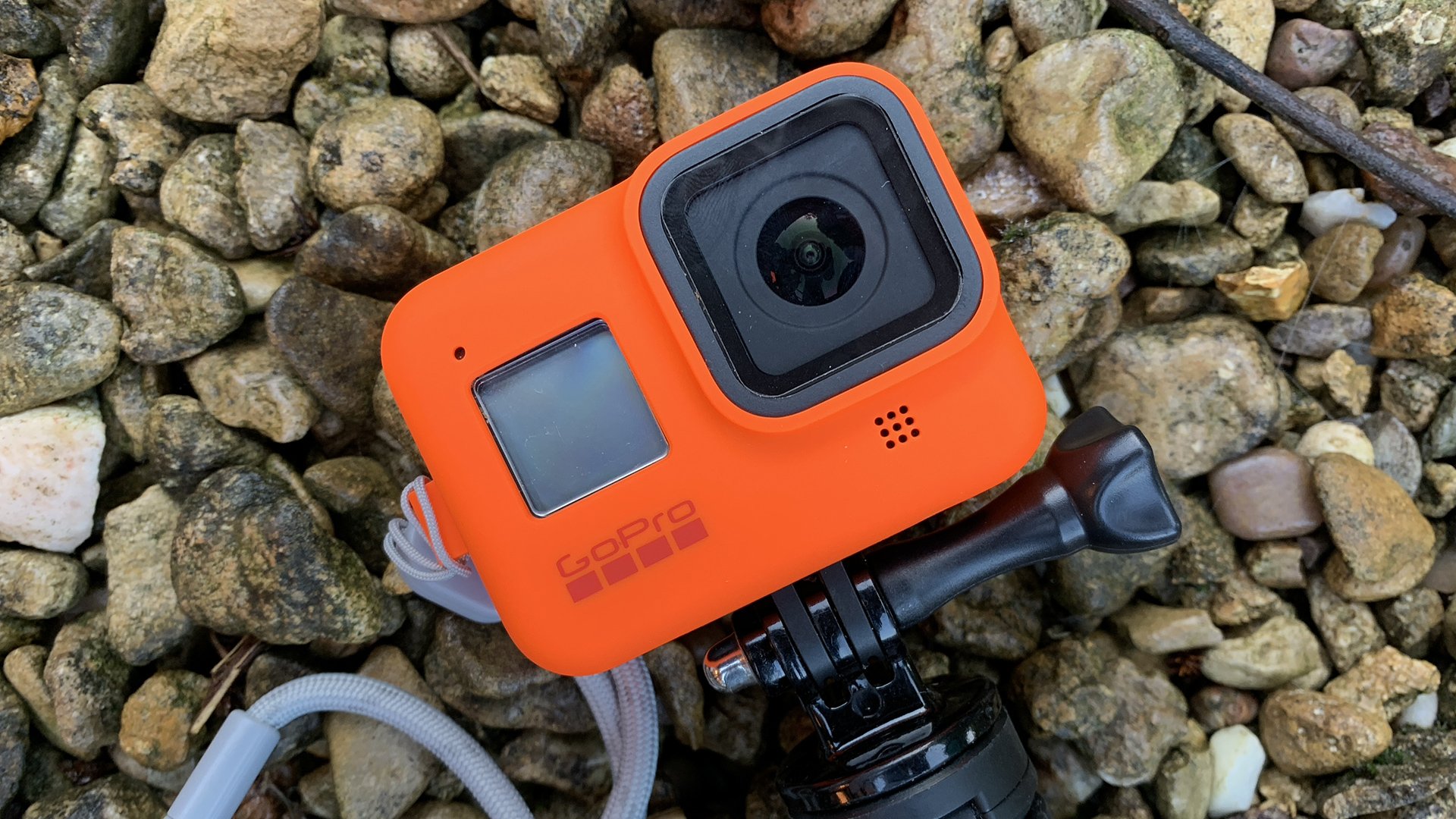
Replay Review: We take the GoPro HERO8 through its paces in the wilds of Wales and discover whether HyperSmooth 2.0 lives up to the hype.
Last time I covered the general user interface and setup features of the HERO8 Black. In this part I'll be covering how the usability and picture quality work out in the real world. With most promotional videos showing the GoPro being used in vastly more sunny and colourful climes, how will the camera stack up on the now very dull, colourless days of the UK in late autumn?
New video modes and HyperSmooth 2.0
The base resolutions on the HERO8 Black remain the same as the previous HERO7, but with some important differences. Firstly you can use the HyperSmooth function in nearly all video modes and frame rates. HyperSmooth 2.0 now has a range of settings, Off, On, High, and Boost. HyperSmooth was already impressive on the HERO7, but version 2.0 offers much more.
You can’t currently use the High and Boost settings in all modes, such as 4K 4:3, and currently HyperSmooth doesn’t work with 4K60 Linear, although this might be coming in a firmware update (N.B. The new firmware enabling this has now been released). “On” gives HERO7 style stability, but with a lot better tuning. High and Boost take EIS to a whole new level as you’ll see in my video at the end of the article.
4K modes can now use the Linear setting. This eliminates the fisheye look at the expense of some FOV. But if you want shots where a fisheye look is undesirable, Linear lets you get them in-camera.
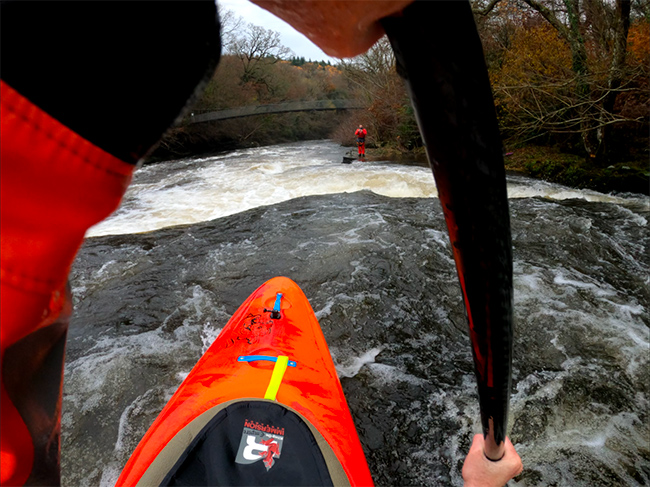
4:3 mode with HyperSmooth is great for POV shots. The final shot can have a dynamic stretch applied for the final video.
Fire it up!
The HERO8 powers up in around 3-5 secs. A QuikCapture mode can be enabled, which lets you press the record button to turn the camera on and start recording automatically. Press record again and the camera stops recording and shuts down. This is a highly useful feature, saves battery life, and minimises the risk of confusion during use. For example, when the camera was helmet mounted I accidentally switched modes while fumbling for the power button. The next time I powered up I was in Timelapse mode. QuikCapture prevents such silliness.
The new preset system works very well. When I moved from a helmet mount to one on the front of my boat, all I needed to do was select the preset I had set up and that was that. No scrolling through setup menus needed. It’s also in scenarios like this, mounted out of reach, where the voice control comes in handy. When you remember to turn it on! Generally the voice control works very well, but your mileage will depend on your environment. It can be comical to watch someone effectively having an argument with their GoPro! Voice control uses more battery life, because when you turn the camera off the camera is always listening, ready for your command. That said, it is a very cool, and very useful feature to have to hand.
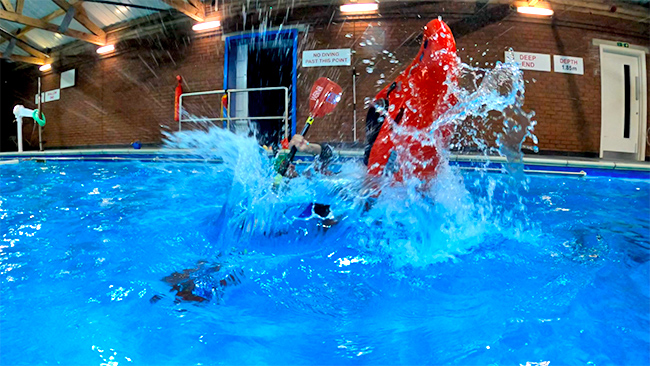
120fps in 2.7K with the linear lens setting is fantastic (slight CC applied for this screengrab)
Slippery when wet
The LCD screen clear and bright, but it can suffer from a lack of responsiveness when wet. Current technology means that it cannot be used as a touch screen at all underwater, however in rain you may still get a little frustrated trying the swipe gestures. Try to have a small cloth handy that you can use to wipe it off. Although in incessant rain you may be fighting a losing battle. Luckily, if you have your presets already setup, the need to go into menus will be greatly reduced.
Picture quality
Coming from the HERO6 I am undergoing a more noticeable upgrade than if I had come from the HERO7. That said, I think there is a night and day difference between the 6 and the 8. The default colour profile seems deeper in colour. With saturated colours it can still suffer from clipping, particularly in the blue channel. But switch to the flat profile and this seems to go away. Noise performance also seems much improved. In the screenshots below you can see the difference in some swimming pool water. Ignore the colour difference though since my HERO6 was in flat profile mode at the time.
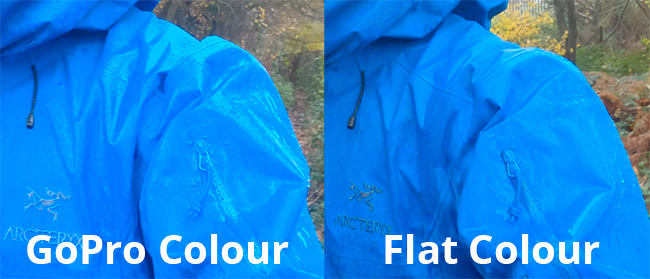
Even with the sharpness dialled right down, the picture from such a small camera as this is pretty mind blowing. The HERO8 can record 100Mbps HEVC, vs a max of 78Mbps in the HERO7. We take such cameras for granted now, nitpicking over every detail. But remember that this is a tiny camera that fits into your pocket. On the dull day I went boating in its default GoPro Colour, the boats were bright and colourful. If this look is too much, then use flat. But the vast majority of users of this camera will want the picture to look vibrant right out of the box, ready to share to social media or YouTube.
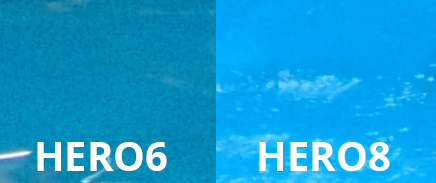
Noise comparison in the lower light of a swimming pool
Digital lenses
The old GoPros could digitally zoom the picture. Digital Lenses on the HERO8 are slightly different in terms of the options on offer, but work in the same way. However the quality is much higher! The options, depending on the resolution and aspect you have selected are:
SuperView
This mode takes the FOV from the 4:3 super wide modes but automatically corrects the aspect ratio back to 16:9 by dynamically stretching either side of the picture and pinching the centre so it retains roughly the right shape. This is very similar to old 16:9 TV sets that used to have this ability to make 4:3 footage fill the screen without zooming. The advantage of this mode is that if you want a quick result it saves you from having to do it in post, and it also gives you the full height of the sensor. Ideal for dynamic POV shots.
Wide
This is the one we are all familiar with from GoPro. A good, all-round setting.
Linear
This corrects the fisheye look. This is great for more traditional B-roll footage, yet still gives a good wide angle view. It can also be used to create time lapses and TimeWarps (Hyperlapses).
Narrow
This isn’t available in all modes, but gives a look that is completely devoid of the fisheye look. Use this if you want shots that really don’t look like they were taken on a GoPro. Some softness is introduced, but it still retains a high quality, especially in good light. Although it works in the same way, it is higher quality than the old cameras in Narrow mode. Narrow is only available in 2.7K modes and below (but not 120fps).
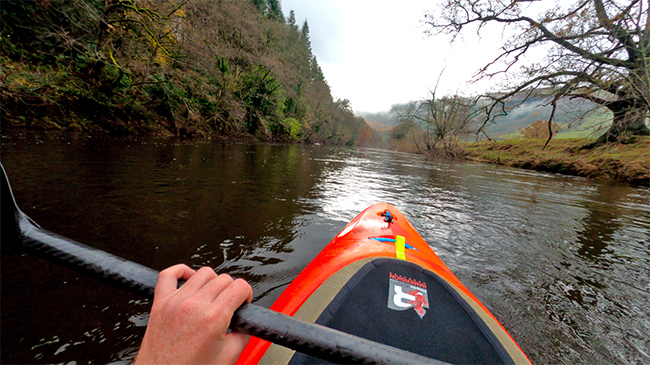
Hypersmooth just makes every mode more usable (slight shadow lift applied)
HyperSmooth 2.0 in the real world
When HyperSmooth was released on the HERO7 it is fair to say it was transformative for EIS. Other cameras had some good stabilisation, but they weren’t in the same league as HyperSmooth.
Now there’s HyperSmooth 2.0. There are three settings for this, with the availability of each being dependent on the video mode you use. These aren’t ‘dumb’ modes however. Let’s say you select the lowest setting “On” and then you use the Digital Lens option to select a narrower FOV, the camera will use the additional zoomed area to increase the HyperSmooth ability.
Out in the real world HyperSmooth 2.0 is pretty incredible. You won’t want it for everything. For example I turned it off when I mounted it on the front of my kayak. Using the base setting of “On” during 4:3 helmet mounted POVs is really nice. It copes really well with head movements and still gives an immersive view, but without the jitteriness you’d get if you have it turned off.
Put the camera into High or Boost modes and you will be wondering why *all* cameras can’t have this! The extra stability is pretty sublime. Walking handheld with the camera as I did in the video below does show ‘walkiness’, which would be the same for any gimbal. Put the HERO8 on a longer pole to help isolate it from your body though, and with care you can see why the Karma grip isn’t being pushed any more (it isn’t compatible with the HERO8 regardless).
The best thing about HyperSmooth 2.0 is that there are no funny glitches the I could spot. No jumping or sudden jerks that show up on some competitors devices. It’s all perfectly smooth, and very clever indeed.
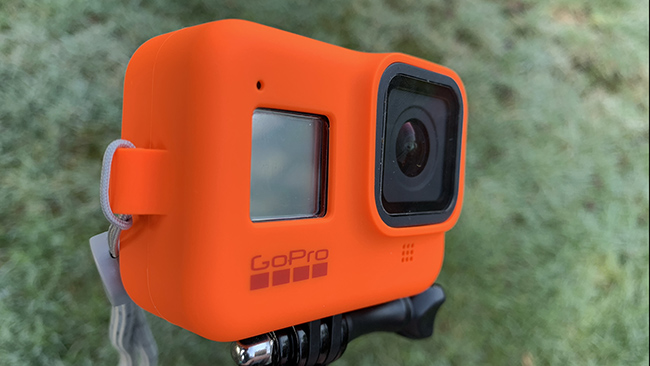
The GoPro HERO8 can be further protected, and made more visible with accessories such as this silicone sleeve
Audio and battery life
I tested the camera using the wind filter on most of the time. On occasion voices can seem ever so slightly muffled. But it’s a minor effect and not enough to deter me from leaving the setting on most of the time. It can be set to auto, but I would prefer to just leave it on unless I’m filming indoors or other place where wind noise isn’t an issue.
In the water itself the camera coped excellently. Sometimes with footage from friends HERO7s while kayaking, the water interacting with the camera would sometimes cause what I can only describe as a ‘whistle’ effect. I noticed no such issues using the HERO8 so far.
Battery life is on par with previous models. I was getting around an hour of use out of a charge. Bear in mind that the settings you use will have an effect on duration. If you need to charge, or even power the camera externally, you can do so by using a mobile phone battery bank via the USB-C slot. Given the new side door design, I wouldn’t put it past a third party to design an attachable waterproof external battery for it.
Conclusion
The HERO8 is capable of much more than I have mentioned here. The stills modes for example have a lot of potential, and modes like Nightlapse allow you to take time lapses of the stars, or tricky day/night transition sequences. There’s also SuperPhoto, which produces a highly enhanced still ready for sharing directly to social media etc.
The camera performed reliably for the most part. There was only one occasion where it wouldn’t stop recording for some reason. This was solved by pressing the power button to try and turn it off. This worked, and the camera initiated a repair to the video file so nothing was lost, and I didn’t need to remove the battery or anything.
If you have a HERO6 and below, I would thoroughly recommend the upgrade. For HERO7 owners the answer might seem less clear. But I think that the HERO8 offers so much extra functionality that I would say that it is a worthy upgrade from that camera.
The HERO8 is a little marvel of a camera, and I still find it astounding how such a device is even possible. But it is, and you can buy one. I have.
The HERO8 Black retails for £379.99, but you can get up to £100 off when you trade in any digital camera.
Watch some example footage below (no grading applied).
Tags: Production


Comments